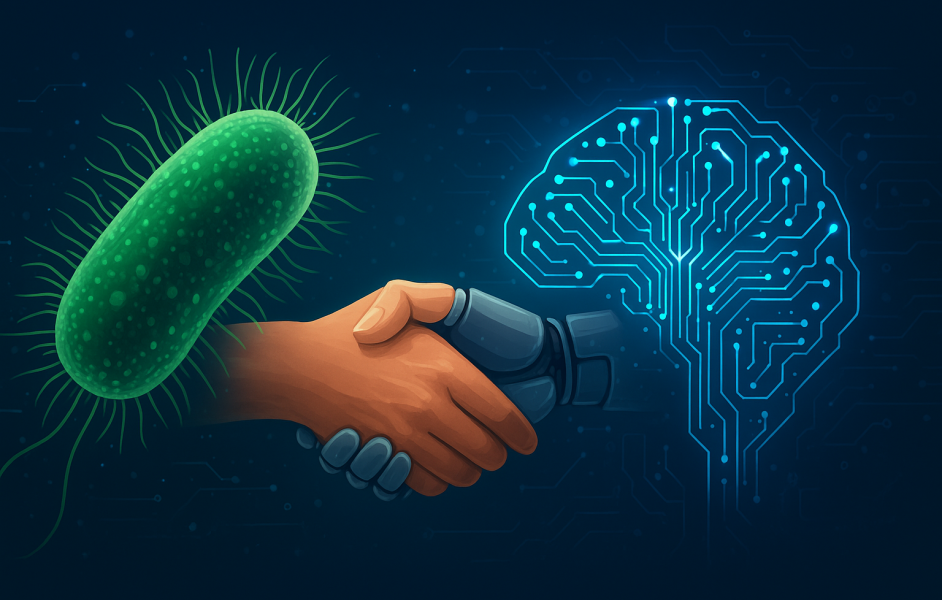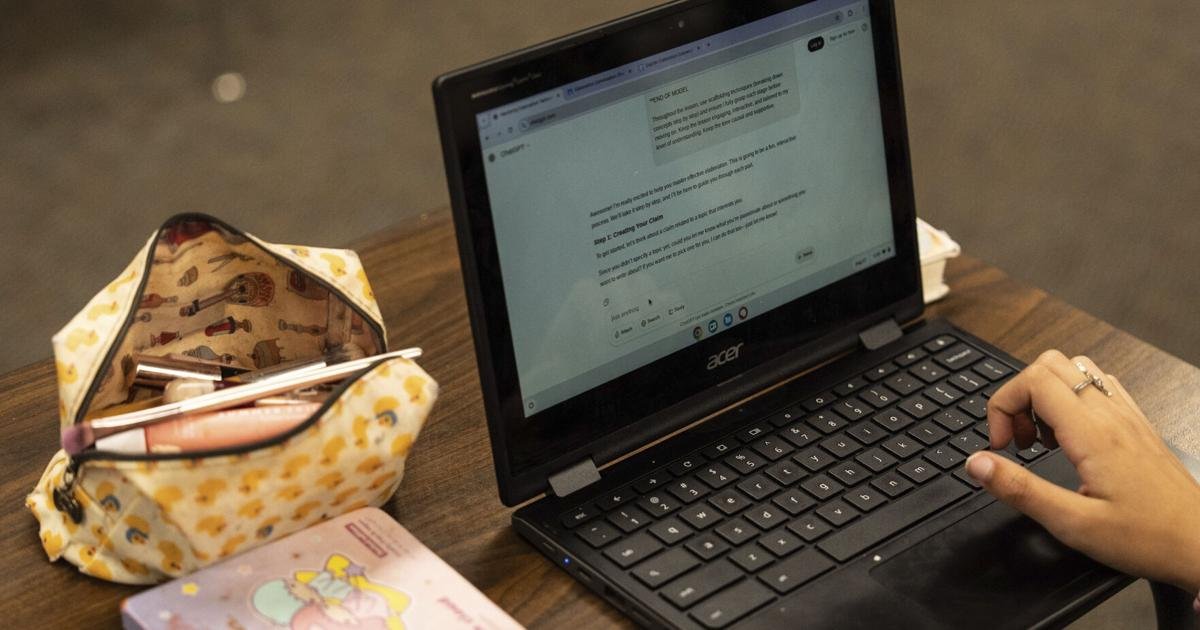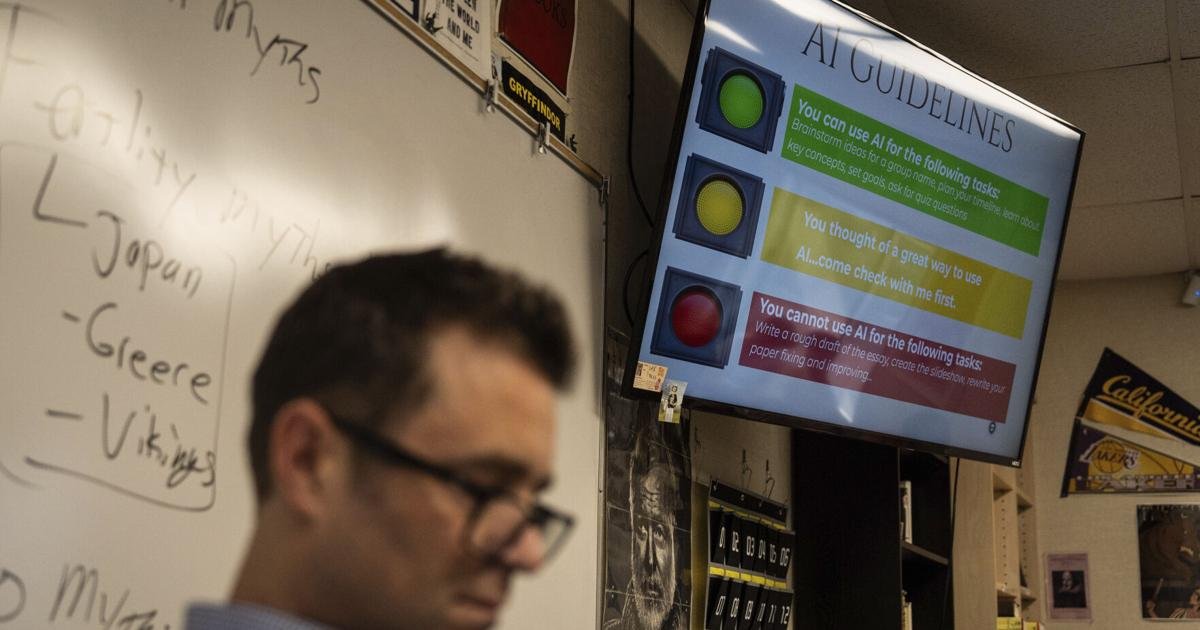Artificial Intelligence (AI) is often perceived as a purely digital, cold technology distinct from the living world. However, a new direction is emerging that seeks to bridge this divide. This approach, known as Symbiotic AI, combines the computational power of machines with the adaptability of microbes, which are the smallest yet among the most versatile forms of life on Earth.
Recent progress in synthetic biology, microbiome research, and machine learning is converging to make this vision possible. The result is the development of AI-guided bioengineering, advanced therapies for human health, innovative strategies for ecosystem restoration, and new industries that were once confined to the imagination of science fiction. From cutting-edge research laboratories to pioneering biotech startups, these opportunities are beginning to take shape in practice.
Symbiotic AI extends beyond technological advancement. It reflects a fundamental transformation in the way humanity understands and interacts with life. By aligning digital intelligence with biological creativity, this paradigm introduces an era where technology does not merely imitate living systems but evolves in cooperation with them.
What Is Symbiotic AI?
In nature, symbiosis describes a close relationship between two organisms that support each other’s survival and growth. Examples include coral and algae, plants and fungi, and even humans with the bacteria living in their digestive systems. These partnerships show that life often depends on cooperation, not competition.
Symbiotic AI builds on the biological idea of cooperation and applies it to the link between machines and microbes. In traditional biotechnology, AI is mainly used to study and analyze biological data. In Symbiotic AI, however, it becomes an active partner. It helps modify microbes, control their functions, and design living systems that can respond to changing conditions.
Microbes contribute abilities that machines cannot reproduce. They repair themselves, convert chemicals into beneficial compounds, and create materials in environmentally sustainable ways. AI, on the other hand, complements these qualities by adding speed, precision, and the ability to coordinate complex processes. When combined, the strengths of microbes and AI reinforce each other. This cooperation produces a bio-digital ecosystem capable of outcomes that neither side could achieve independently.
Why Microbes Are Nature’s Hidden Engineers
Microbes are nature’s hidden engineers. They play a central role in maintaining Earth’s ecosystems through many essential biological processes. Although invisible to the eye, bacteria, fungi, and yeast sustain life and maintain environmental balance.
One of their most important functions is managing biogeochemical cycles. Microbes recycle key elements such as carbon, nitrogen, and phosphorus. They decompose organic matter, turning dead plants and animals into carbon dioxide, ammonia, and nutrients that plants can use. This recycling process supports soil fertility and plant growth. It also maintains ecosystem health. A clear example is nitrogen fixation, where certain bacteria convert nitrogen from the air into ammonia, restoring nitrogen in soil for crops and natural vegetation.
Microbes also act as ecosystem builders. In soil, they help form and stabilize aggregates, improving structure, aeration, and water retention. These properties directly support plant growth and strengthen ecosystem resilience. In oceans, microbes form microbial mats and forests that create habitats for many species. These structures provide food, shelter, and niches that sustain marine biodiversity. They are vital to seafloor stability and productivity.
Several qualities make microbes highly suitable for integration with AI.
- Versatility: They survive in extreme environments, from deep oceans to deserts, showing adaptability beyond many larger organisms.
- Programmability: With genetic tools such as CRISPR, microbes can be modified to produce medicines, clean pollutants, or improve nitrogen fixation.
- Scalability: Because they reproduce quickly, microbes can be grown in large quantities, making them useful as biological factories.
- Adaptability: Unlike machines, microbes evolve naturally, allowing them to adjust to changing conditions over time.
The Role of AI in Microbial Engineering
AI strengthens the work of microbial engineering. Instead of relying on trial and error, AI can analyze large amounts of data and predict which microbial strains or genetic changes are most effective. This speeds up the development of solutions for medicine, agriculture, and environmental restoration.
AI complements microbes’ natural role in supporting ecosystems. It combines the adaptability and creativity of living systems with the accuracy and efficiency of computation. Together, microbes and AI improve biotechnology and ecosystem management, using nature’s engineering abilities.
AI plays several vital roles in microbial engineering. First, it helps with genomic sequencing and pattern recognition. Modern sequencing produces vast amounts of data. AI can quickly find genetic patterns and functions that humans might overlook.
Second, AI assists in protein structure prediction. Breakthroughs like DeepMind’s AlphaFold have shown that AI can determine the 3D shapes of proteins. This enables scientists to design new enzymes that microbes can use for tasks such as breaking down plastics.
Third, AI supports designing microbial communities. Natural ecosystems rely on diverse microbes working together. AI can simulate these interactions and design balanced communities for applications like soil restoration or improving gut health. Finally, AI guides gene editing. It predicts which genetic changes are likely to succeed, improving the accuracy of CRISPR experiments and reducing costly mistakes.
Through these roles, AI becomes more than a tool. It acts as an active partner and co-designer of living systems, helping microbes reach their full potential in practical and sustainable ways.
Current Breakthroughs and Research
Between 2023 and 2025, Symbiotic AI has moved from theory to practice. At MIT, researchers developed engineered living materials that embed microbes into bio-cemented building blocks capable of sensing environmental changes and repairing themselves.
Likewise, Google DeepMind expanded its AlphaFold platform into AlphaFold 3 and AlphaProteo, enabling the design of novel proteins that microbes can produce for industrial and therapeutic use.
In 2024, synthetic biology startups introduced AI-driven fermentation systems to improve microbial activity for drug production and sustainable food. Eden Bio demonstrated precision fermentation for making protein sustainably.
Similarly, Pow.Bio used high-density bioprocess data and digital models. These companies show how machine learning, automated bioreactors, and microbial engineering work together in modern biomanufacturing.
Market analysts estimate the synthetic biology industry was worth $14.19 billion in 2023 and could exceed $65 billion by 2032, fueled by AI integration and biomanufacturing advances.
Real-World Applications of Symbiotic AI
Symbiotic AI is now being applied in healthcare, the environment, agriculture, and various industries. In healthcare, engineered probiotics can deliver drugs directly to the gut, while AI tracks their activity and effectiveness. Bacterial biosensors detect disease markers, and AI interprets these signals to support personalized treatments based on individual microbiomes.
In the environment, microbes engineered with AI can break down plastics and capture carbon dioxide more efficiently than plants. AI also helps predict the ecological impact of releasing these microbes, ensuring safety and balance.
In agriculture, AI designs microbial communities to improve soil fertility, while fermentation of yeast and bacteria produces sustainable proteins that reduce reliance on livestock. In industry, AI-guided microbes produce biofuels and biodegradable plastics, and living materials made from fungi and bacteria can sense damage and repair themselves. These applications demonstrate how Symbiotic AI integrates biological adaptability with computational precision to achieve outcomes beyond the reach of either alone.
Ethical and Safety Challenges
The collaboration between machines and microbes through Symbiotic AI has great potential, but it also raises important ethical and safety concerns that must be addressed carefully.
Engineered microbes optimized by AI may escape from controlled laboratory settings, posing biosafety risks. Such releases could disturb natural ecosystems, introduce harmful pathogens, or cause lasting environmental damage. Strong containment measures and fail-safe systems are therefore essential to prevent these risks.
Governance and regulation bring another challenge. The creation of AI-guided living organisms raises questions about ownership and responsibility. Should oversight come from private companies, governments, or international bodies? Clear legal frameworks and accountability rules are needed to manage these novel life forms responsibly.
There is also a dual-use dilemma. The same technologies that support medicine, agriculture, and environmental restoration could be misused for harmful purposes, such as biological weapons or ecological sabotage. Therefore, strict ethical guidelines, transparent research practices, and vigilant oversight are necessary to reduce these risks.
Public trust is equally important. People may fear or distrust AI-engineered microbes, which could slow adoption in healthcare, farming, or industry. Transparent communication, ethical research, and engagement with communities help build understanding and acceptance.
Addressing these issues requires a multidisciplinary approach that combines ethics, safety protocols, responsible governance, and international collaboration. Responsible management ensures that Symbiotic AI can be used in ways that protect human health, preserve ecosystems, and provide fair benefits.
The Bottom Line
Symbiotic AI represents a powerful convergence of biology and computation, creating a partnership where microbes and machines complement each other’s strengths. This collaboration is transforming medicine, agriculture, environmental restoration, and industry, offering once impossible solutions. At the same time, it brings ethical, safety, and governance challenges that cannot be ignored. Thus, responsible development requires careful regulation, transparent research, and public engagement to ensure trust and safety. By combining biological creativity with computational precision under strict oversight, Symbiotic AI can achieve practical, sustainable outcomes while minimizing risks.























